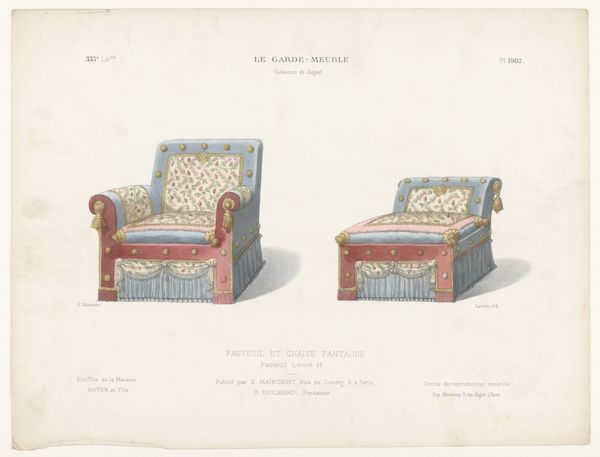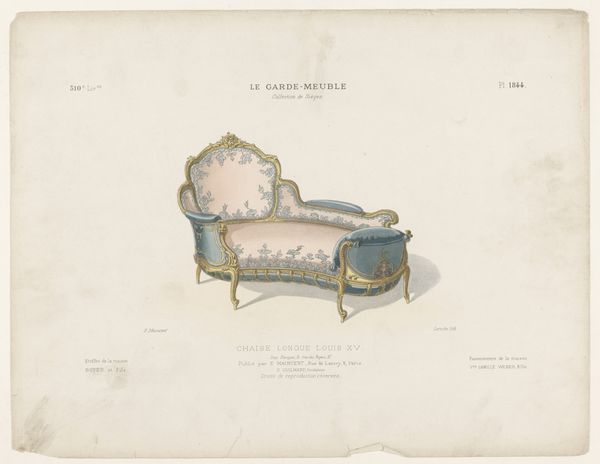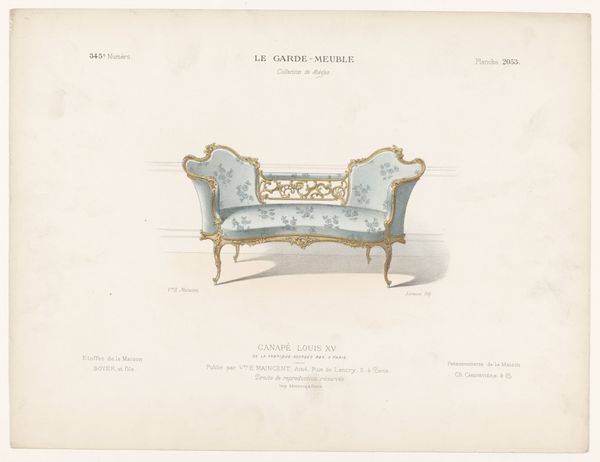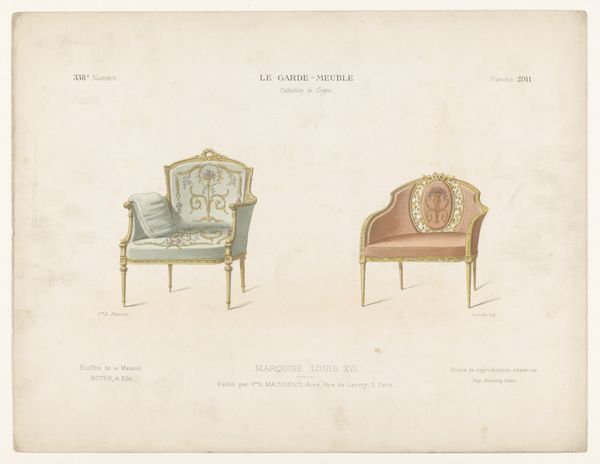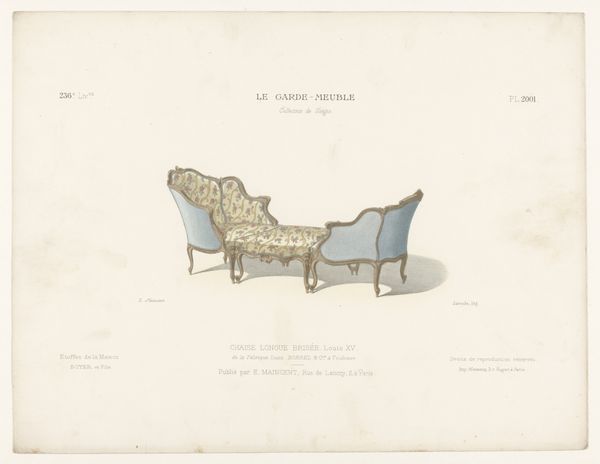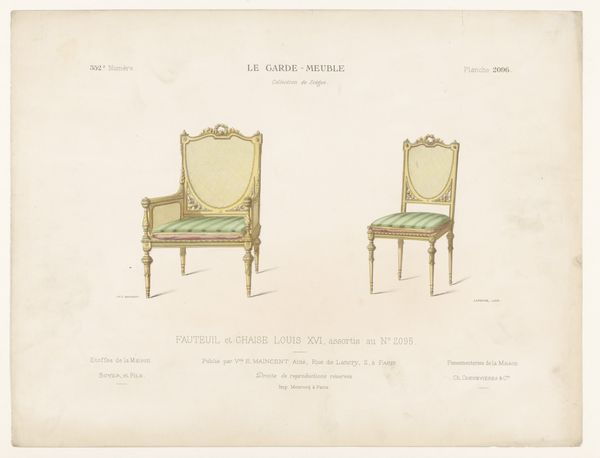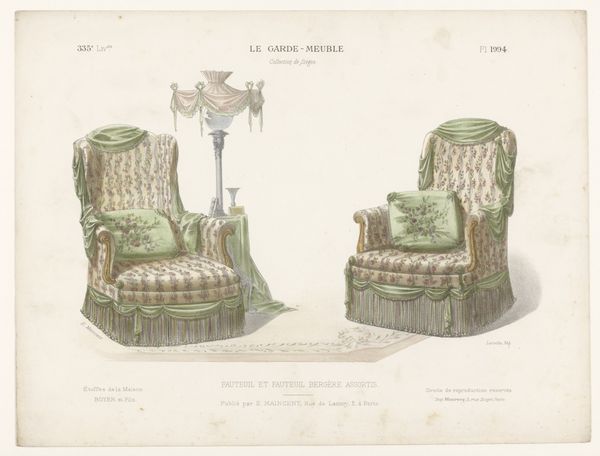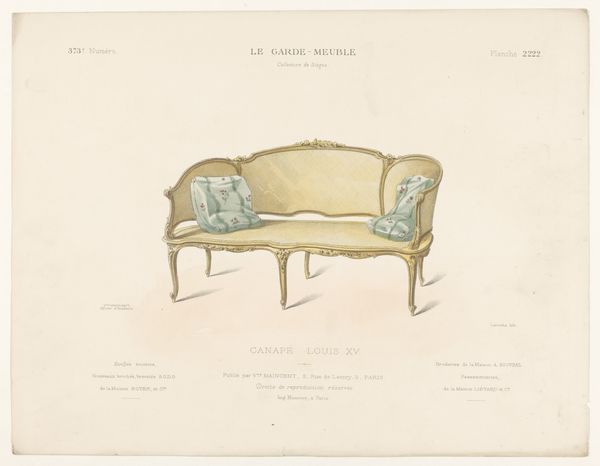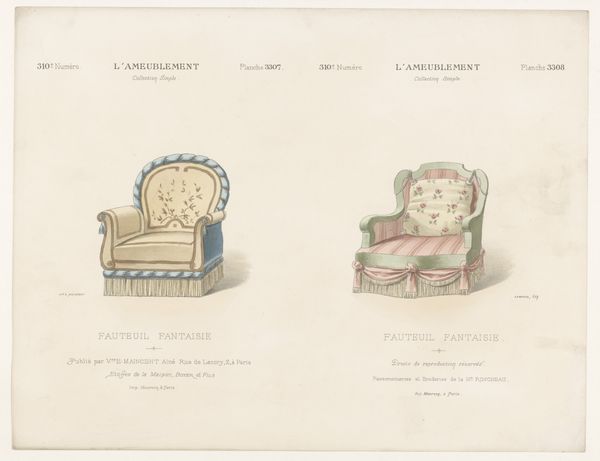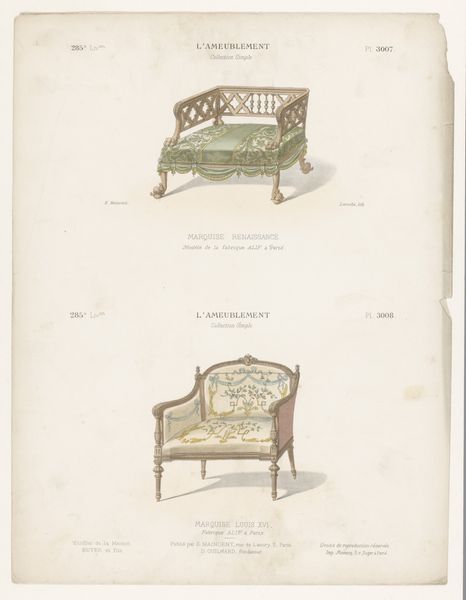
drawing, coloured-pencil, print, pen
#
drawing
#
coloured-pencil
# print
#
coloured pencil
#
pen
#
decorative-art
Dimensions: height 275 mm, width 362 mm
Copyright: Rijks Museum: Open Domain
Curator: This delicate print, dating from 1895 to 1935, presents a formal study of furniture. Titled "Twee fauteuils," it showcases two chairs alongside a small lamp table, rendered with colored pencil and pen. Editor: My initial impression is of subdued elegance. The pastel shades create a calming, almost ethereal mood, while the delicate floral motifs add a touch of whimsical charm. Curator: Note how the composition uses line and form. Each piece is meticulously outlined, emphasizing shape. Consider, also, the distribution of color; muted pastel tones serve to heighten their intrinsic design value. Semiotically, we may decode it using decorative structuralism that presents formal artistic composition. Editor: Beyond its purely aesthetic qualities, what might this image tell us about the culture from which it originated? Was this a design proposal meant for an aristocratic client, or perhaps something more broadly distributed to aspirational consumers? How does it intersect with discourses of luxury, comfort, and taste of that period? Curator: One observes symmetry is notably absent here. The two chairs, while sharing commonalities in style, display subtle differences. This divergence disrupts what might have been a straightforward decorative schema. It compels us to scrutinize individual elements within an intentional arrangement of forms. Editor: Absolutely. I’d argue that understanding its function, as a proposed idea or a widely produced image for "le garde-meuble" the decorative taste, reveals significant historical details about furniture design during that era, the status of "good design," and it’s role as an engine to cultural growth and cultural competition across different markets. It speaks of an evolving aesthetic consciousness amongst producers. Curator: You see now why formalistic scrutiny, whilst vital, often profits immensely from layered interpretive insights into matters of historical contextual substance. Editor: Indeed. Dissecting formal design allows historical reconstruction, and social cultural interpretation broadens our understanding from purely style appreciation towards how design contributes into how societies value and negotiate taste.
Comments
No comments
Be the first to comment and join the conversation on the ultimate creative platform.
